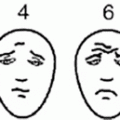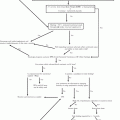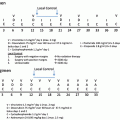Daniela Cristina Stefan and Carlos Rodriguez-Galindo (eds.)Pediatric Hematology-Oncology in Countries with Limited Resources2014A Practical Manual10.1007/978-1-4614-3891-5_1
© Springer Science+Business Media New York 2014
1. Childhood Cancer in Low-Income and Middle-Income Countries in the Twenty-First Century
(1)
Department of Paediatrics and Child Health, Stellenbosch University & Tygerberg Hospital, Tygerberg, South Africa
Abstract
According to the estimations of the International Agency for Research in Cancer (IARC), a little over 175,000 new cases of cancer in children (defined as individuals aged 0–14 years) will appear in the world every year [1]. While these malignancies are mostly not preventable, they are curable. Five-year survival rates as high as 80 % have been achieved in resource-rich countries, where the majority of childhood cancer survivors attain maturity and are productive. In those countries, the emphasis is moving from ensuring survival to minimizing the long-term adverse effects of the therapy. To achieve such percentages of cure, expenditures in the range of USD 100,000 per patient are necessary [2].
According to the estimations of the International Agency for Research in Cancer (IARC), a little over 175,000 new cases of cancer in children (defined as individuals aged 0–14 years) will appear in the world every year [1]. While these malignancies are mostly not preventable, they are curable. Five-year survival rates as high as 80 % have been achieved in resource-rich countries, where the majority of childhood cancer survivors attain maturity and are productive. In those countries, the emphasis is moving from ensuring survival to minimizing the long-term adverse effects of the therapy. To achieve such percentages of cure, expenditures in the range of USD 100,000 per patient are necessary [2].
This encouraging perspective is only available to 16 % of the children who become ill with cancer. The remaining 84 % or around 147,000 new cases per year, live in low-income or middle-income countries, where their survival chances are much lower since less developed countries account for 94 % of the global mortality from childhood cancer [3, 4]. The striking discrepancy in the above percentages is due mostly to the fact that, out of the seven billion people on our planet, more than 5.8 billion live in limited resource environments [5]. Additionally, the proportion of individuals aged 0–14 years in these populations is around 29 % [6], much higher than the 17 % recorded in the more developed countries.
As the gross national income (GNI) per capita is only USD 1,025 or less in low-income countries and between USD 1,026 and 12,475 in middle-income countries [7], the available funds for health care are limited, with direct consequences on the survival rates. However, very little is known on the real costs of childhood cancer therapy in less developed nations. These may be in fact substantially lower than in the more developed countries. For instance, the average expenditure for treating one case of childhood acute lymphoblastic leukaemia in Shanghai, China, was USD 11,000 in the last decade [8]. Similarly, the cost of treating Stage 2 Hodgkin lymphoma in two South African hospitals, with a cure rate of 80 %, was found to be around USD 6,650 [9].
The burden of disease due to childhood cancer in limited resources countries is gradually increasing. The origin of this increase is multifactorial. Firstly, as the management of childhood infectious diseases and children’s nutrition improves, a substantial reduction of the mortality in the 0–5 years age group is seen. However, these children will not be protected from the risk of cancer. Secondly, industrialization and urban living are spreading to the developing world: as was first documented in Europe and the USA, these changes contribute to increasing the incidence of malignancies. Thirdly, a number of widespread infections increase the risk of cancer in children: the Epstein–Barr virus is connected to Burkitt lymphoma in Central Africa, HIV increases the risk of Kaposi sarcoma and the hepatitis B virus is associated with liver cancer. It is therefore estimated that the number of children with cancer could increase with 30 % by 2020 [10].
A successful strategy for improving the survival rates in children with cancer in limited resource regions should be developed starting from a thorough understanding of the factors which concur to compromise the quality of care. A few insights into the complex difficulties on the path to better cancer care, as they are offered by the studies published to date, are presented below.
Many Children Do Not Access the Cancer Care Facilities
The majority of less developed countries do not have cancer registries and out of the existing registries very few are population-based. In the absence of population-based registries, it is impossible to evaluate not only the incidence of childhood cancer but also the proportion of children who do not access care. Their numbers should be substantial, even in high-medium income countries (i.e. those with GNI’s between USD 4,036 and 12,475). South Africa offers an example: according to the GLOBOCAN estimations of an incidence of 85 childhood cancers per million, around 1,300 new cases should appear every year. However, the South African Children’s Cancer Registry, which is hospital-based and covers the whole country, only counted between 546 and 723 cases yearly between 1997 and 2007 [11].
Another example originates in Brazil, where in 2009 a number of 234 High Complexity Cancer Care Centers existed, which were equipped and staffed to treat cancer in children and adolescents. In these centres, the mortality from cancer in children, as well as the number of therapeutic procedures, was seen to be much smaller in the northern regions than in the southern ones. At the same time, the proportion of childhood deaths from ill-defined causes, which can be a proxy for the number of children not reaching the health care system, was higher in the north. As the units were planned to cover a roughly similar number of children in the territory, and the incidence of childhood cancer was considered to be generally uniform, the authors concluded that a larger number of children with cancer in the North were never seen at a Cancer Centre before their death [12].
Often There Is a Substantial Delay from the Onset of Symptoms to the Initiation of Treatment
Large time gaps from the clinical onset of the disease to instituting the therapy would allow time for progression of the malignancy towards more advanced and difficult to treat stages. Most of the studies addressing the delay from first symptoms to diagnosis and treatment were done on high-income countries [13, 14]. They present evidence for significant progression of the disease during the time elapsed before the child entered the health care system. Research done in Mexico on the risk factors for delay found that Hodgkin disease, the lower standard of education of the mother, the absence of coverage of the patient by health insurance and the longer distance between home and hospital were correlated with longer delays to the beginning of treatment [15]. Data published from South Africa indicated that in 58 % of cases the initial diagnosis was wrong and the persistence of symptoms in spite of various initial treatments was the most frequent reason to think of malignant disease. In that study, the most important contributor to delay was the physician [16].
Abandonment of Treatment Is Frequent
A recent systematic review and meta-analysis of the literature describing the magnitude of treatment abandonment and its associated factors, in cases of acute leukaemia in children, found that it was vastly different in various studies, from 0 to 74.5 %. The rates were significantly higher in lower-middle income countries (please see definition above), at 29 %, while in higher-middle income countries the figures found were around 2 % (p < 0.0001). However, the heterogeneity of the higher rates was interpreted by the authors as an indicator that the abandonment could be reduced, even in restricted resource settings. The analysis could not find clear explanations for the heterogeneity [17].
Another recent, retrospective study, addressing the causes of abandonment of treatment for retinoblastoma in Uttar Pradesh, India, contributes more details to the understanding of the matter: out of 101 children, 50 (49.5 %) defaulted. Around one-third of those families could be traced; the lack of finances and the rejection of enucleation as a means of treatment were the major reasons given for abandonment [18]. A few children returned to complete their treatment, with more advanced disease, which reduced their survival to 50 %, while 75 % of those who never returned died during the monitoring period. Additional statistic data from Delhi, India, this time on a variety of cancers, indicated that the cost of treatment, the great distance to the hospital (over 100 km), the belief that cancer was incurable and the female sex of the child were the reasons given by the parents for discontinuing the therapy [19].
Stay updated, free articles. Join our Telegram channel

Full access? Get Clinical Tree







